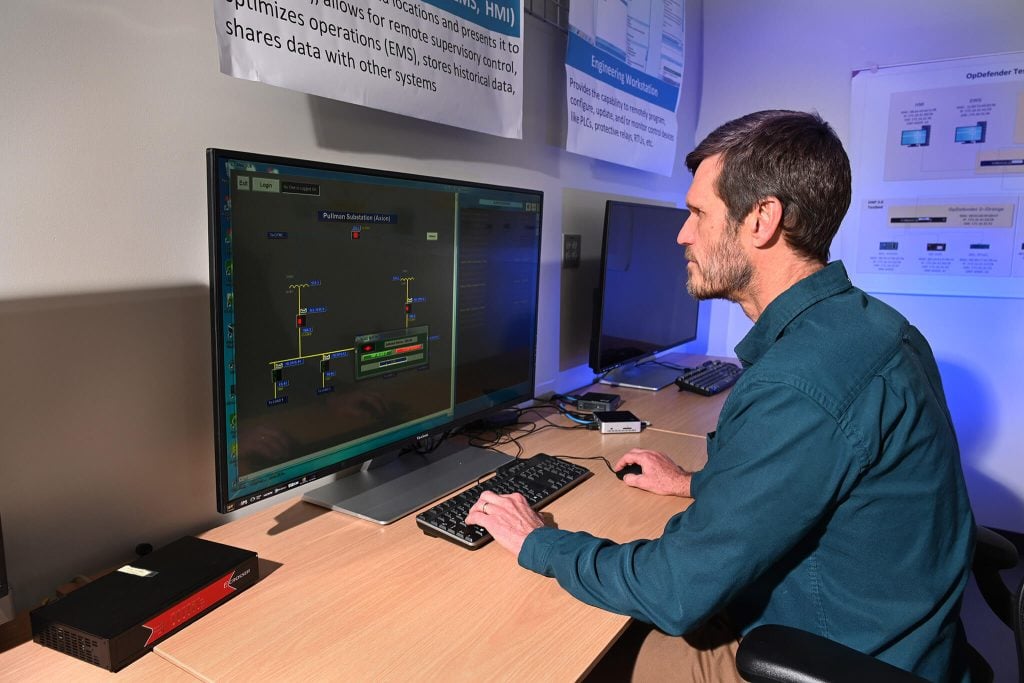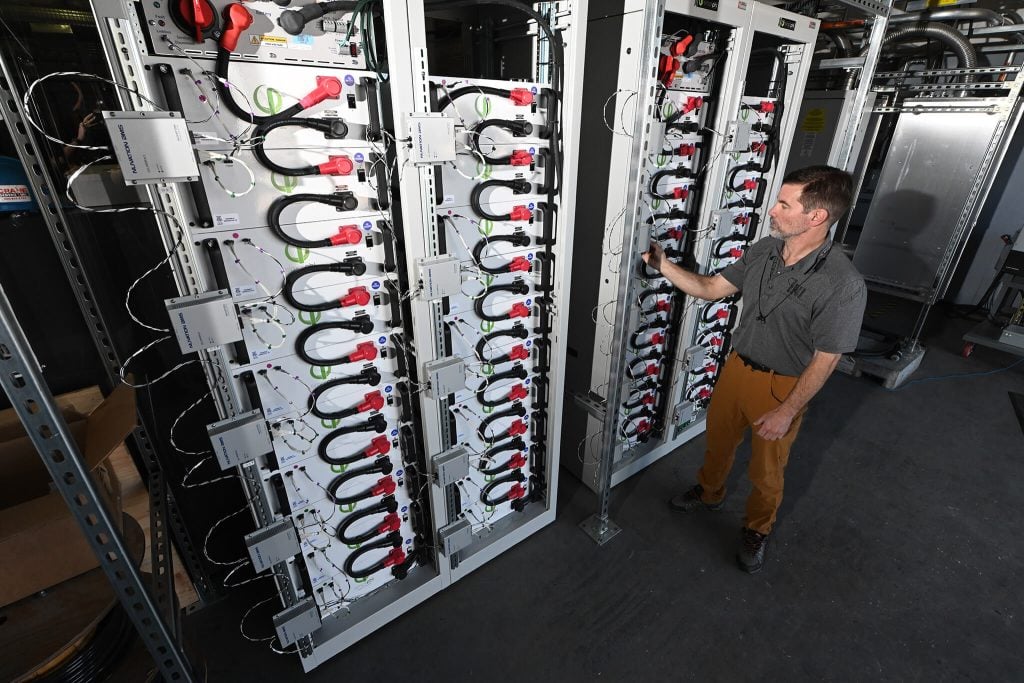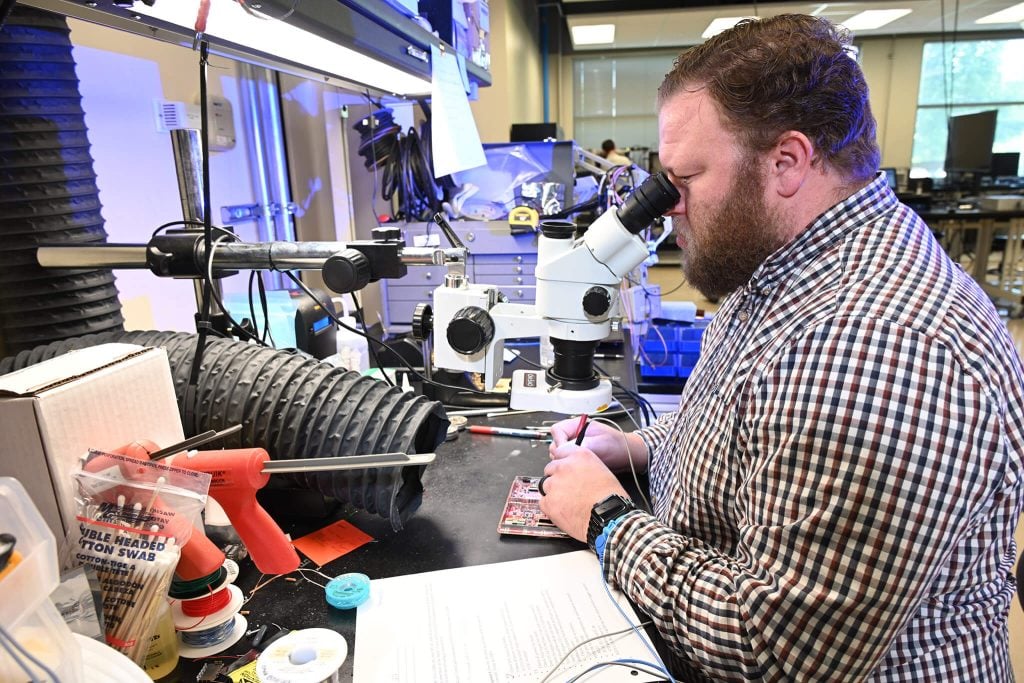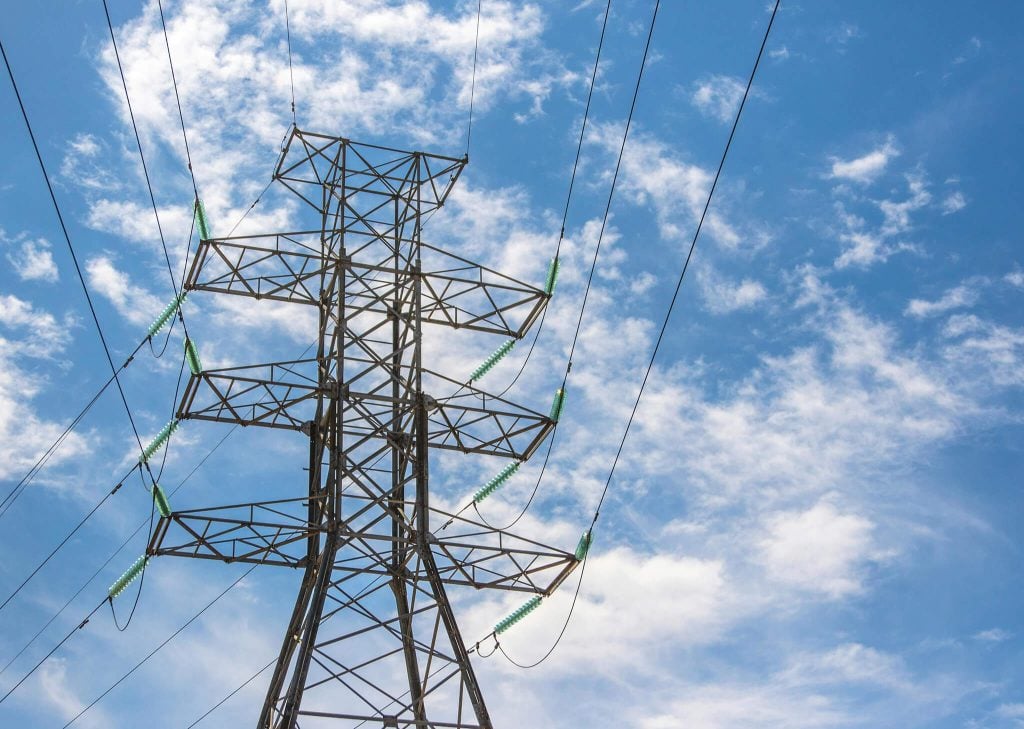Energy and Power Systems
About Energy and Power Systems (EPS)
Evolving grids and those of the future will look far different than today’s electrical grid, which is built on a one-way delivery model: power generation, transmission and distribution in response to user demand.
Numerous factors are driving these changes, including more alternative energy integration, use of smaller-scale, widely distributed energy resources, and the need for increased reliability and resilience. Modern systems will blur the boundaries between suppliers and consumers — resulting in two-way power flow and demand that increasingly adapts to available supply.
Not only do grids experience variability in loads (demand for electricity), but alternative sources, such as wind, are intermittent and can surge or drop off without notice. A number of advances will be critical for making the future grid reliable and resilient. For example, “shock absorbers,” such as energy storage systems and dynamic communication, will help minimize brownouts or power surges.
Idaho National Laboratory has the expertise and infrastructure to test numerous aspects of modern energy systems.
Dynamic systems with 50% to 75% average renewable energy content can be technically and economically challenging to stabilize.
EPS Solutions
Simulation
Integration
Resources
Capabilities
Real-time Simulation
Energy systems require the integration of numerous complex components. Testing and optimizing new systems requires the ability to model interactions and simulate responses. INL’s modeling capabilities can incorporate real-world data, hardware and software into real-time simulations. We have diverse expertise and the ability to cosimulate electrical, thermal and mechanical systems. Plus, we can integrate with INL’s microgrid test beds and with simulation resources at other national laboratories.

INL has the largest real-time digital simulation capability in the national laboratory system.

INL researchers are evaluating options including heavy vehicle battery packs, fly wheels, flow batteries and supercapacitors.
Storage and Grid Stability
Variability in electricity demand is a challenge for intermittent renewable sources, but large-scale storage systems could fill gaps in energy availability and reliability. The ideal combination of energy source and backup system depends on the electricity demands of each particular end user. Since usage and recharging patterns impact a storage system’s performance and lifetime, INL tests and demonstrates a variety of systems to understand which are best suited to a particular scenario.
Microgrid Integration
A microgrid is a localized group of electricity sources and loads that can operate autonomously. A microgrid normally operates connected to and synchronous with the traditional centralized grid, but a microgrid can disconnect and function independently as needed. It can be powered by distributed generators, batteries or renewable resources.
INL has experience designing microgrids that integrate wind or solar resources with the right storage option. The result: a system of variable resources that is both flexible and manageable. INL’s 100 kW microgrid test bed includes “smart house” components such as home appliances that can dynamically adjust their electricity demand.
Military bases require reliable power with backup systems in case the primary grid is interrupted. However, as bases incorporate renewable sources such as wind and solar, the resulting swings in diesel generator usage can shorten the generator’s life span.
Such bases look to INL’s research for solutions. The lab has expertise in renewable resource assessment, grid integration and resilient power systems, and we welcome the opportunity to move those concepts from the lab setting to real-world demonstrations.

INL researchers have incorporated more and 1,000MW of hybrid, solar, and wind energy at Army, Navy, and Air Force sites in four U.S. states, one U.S. territory, and three foreign countries.
Wind blowing at a right angle to a high-voltage line can cool the line enough to safely increase the amount of current it can carry by 10 to 40 percent.
Dynamic Resources
In areas where wind farms are being developed, there is potential to take advantage of wind cooling on transmission lines concurrent with wind power generation. Taking advantage of such conditions involves a dynamic line rating process that feeds real-time wind and power line data into models that compute a line’s heat and current limits. INL researchers are developing a host of tools that can provide reliable data for each component of the equation.
Nuclear-alternative Systems
Most utility-scale power plants use a single fuel source (such as uranium) to make a single product — electricity. A new breed of industrial power plants could combine nuclear and alternative resources to make energy production more efficient and economical. When wind and solar energy is abundant, such hybrid plants could divert electricity from a baseload power source to industrial applications and use waste heat to make synthetic fuel, chemicals for plastics and other valuable products.

Combining power generation sources could increase efficiency by using excess heat or electricity to make valuable products.

New capabilities include 200- to 300-kW power converters, a 700-kW hour flow battery, a 50kW wind turbine, and up to 17.5kW of concentrated solar power.
Distinctive Capabilities
INL’s full-scale, isolatable power grid test bed provides the exceptional ability to validate power system models in real time. Our Real-Time Digital Simulator can be used for full-scale hardware-in-the-loop, controller-in-the-loop and grid-in-the-loop testing. INL facilities also include 160 kW of load banks, a 2-megawatt power distribution system, four types of energy storage systems, SCADA (Supervisory Control and Data Acquisition) control system test beds, a microgrid test bed and a Wireless National User Facility.



